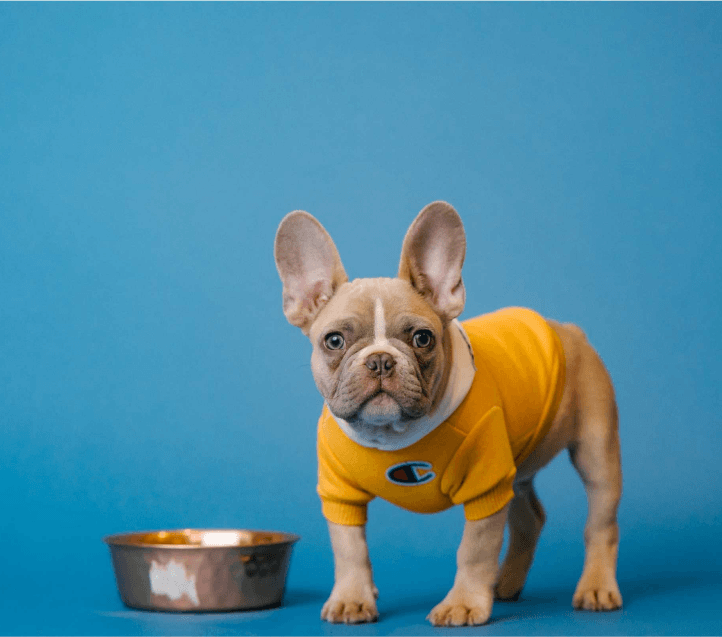What are the advantages and disadvantages of soaking dog food?

You should definitely know the advantages and disadvantages of soaking dry food, a comprehensive nutritional food. For puppies, senior dogs, and very old dogs, when is it best to soak the food? Let's take a look at some of the key points to remember when blanching your dog's food.
You should definitely know the advantages and disadvantages of soaking dry food, a comprehensive nutritional food. For puppies, senior dogs, and very old dogs, when is it best to soak the food? Let's take a look at some of the key points to remember when blanching your dog's food. Soaking dog food: What are the advantages and disadvantages? Wet food is already moistened from the start, but the main reason why you would want to moisten dry food is to make it easier to digest, to make it easier for your dog to eat even if he has oral problems such as periodontal disease, and to make sure he gets plenty of water. If you are going to blanch dry food, you should also know the advantages and disadvantages of blanching dog food
Advantages
-
First of all, when considering a comprehensive nutritional food from the same manufacturer, dry food is more cost-effective than wet food in terms of the daily feeding amount. For this reason, many pet owners feed dry food as their main food.
-
Suppose your dog suffers from gastrointestinal problems such as soft stool or diarrhoea while the dog food is still in the opened package. In that case, you can feed wet food, but you can also soak the already opened dry food to reduce the burden on your dog's gastrointestinal tract.
-
Similarly, for young dogs up to two to three months of age whose digestive system is still underdeveloped, blistering dry food is the most common method of feeding
-
Blanching dry food is also beneficial for dogs that have lost their appetite. This is because blanching increases the flavour of the dog food while it is still warm.
-
Blanching dry food is also the easiest way to rehydrate a dog that does not drink much water.
-
Adult dogs do not need the food to be blanched, but if they have oral problems such as gum disease and cannot eat hard foods, blanching is a good idea.
-
Another advantage is that dry food expands when it contains water, so even a small amount can increase the feeling of fullness in dogs on a diet.
Disadvantages
-
If you eat dry food as it is, plaque is less likely to stick to your teeth than wet food, but if you eat blanched dry food, it is more likely to leave residue on your teeth. However, if you make it a habit to brush your dog's teeth after eating, plaque adhesion can be reduced
-
Another disadvantage of eating only soft food is that the chewing ability of the dog will deteriorate.
-
This can be a benefit for dogs that need to lose weight, but it can also be a disadvantage for dogs that are thin, as the food expands as it is soaked, and they may not be able to eat the calories they need
How to soak dog food
-
The best way to soften dog food is to add lukewarm water (30-40 degrees Celsius) to the dog food in a dish. It's best to add enough water to soak the food, but it's okay if the dry food floats on top of the dish.
-
After soaking the food in hot water for about 15 minutes, the owner should check the hardness by pinching it with fingers or loosening it with the back of a spoon. If there is still water left after blanching, the water can also be licked out or crushed with a spoon to make a dog food paste.
-
Fluffing with room temperature water will take longer than using hot water. Feeding it at human skin temperature (30-40 degrees Celsius) is good for digestion and gives it an aroma. Whenever possible, blanch in lukewarm water from the beginning.
How to quicken the soaking process
-
One of the best ways to blanch the food quickly is to use a blender or food processor.
-
Another way is to put the dog food in a heat-resistant container, soak it in water, and heat it up in the microwave. If you do, be careful not to overheat the food, as this will denature the nutrients in the food.
Can I feed an old dog or puppy blanched dog food?
-
It is okay to feed blanched dog food to older dogs and puppies.
-
Older dogs may have difficulty eating hard foods due to missing teeth or severe periodontal disease. In addition, as they age, their appetite and gastrointestinal functions, including their ability to chew, often deteriorate. For such older dogs, it is best to feed them blanched dry food.
-
For older dogs who are not drinking much water or whose kidneys are failing, it is advisable to blanch the food.
-
In cases where there is little or no appetite, increase the amount of water used for blanching and use a spoon to put the blanched food into the mouth of the old dog.
-
Another option is to put the blended food in a syringe. In this case, add more water so that the syringe can move smoothly.
-
In the case of puppies, it is common to feed dry food blended until they are two to three months old, when their digestive systems are still developing.
CONCLUSION
There are many situations where it is helpful to blanch dry food and feed it to your dog. Keep in mind the advantages and disadvantages of blanching dog food, and make sure to use the right method when blanching so that the nutrients are not lost.
Since blanched dog food can easily deteriorate, it is also important to feed it to your dog right away and discard any leftovers as soon as possible. Only owners can protect the health of their dogs. Please have the right knowledge and make use of it in your dog's daily life.


 How can we help?
How can we help?